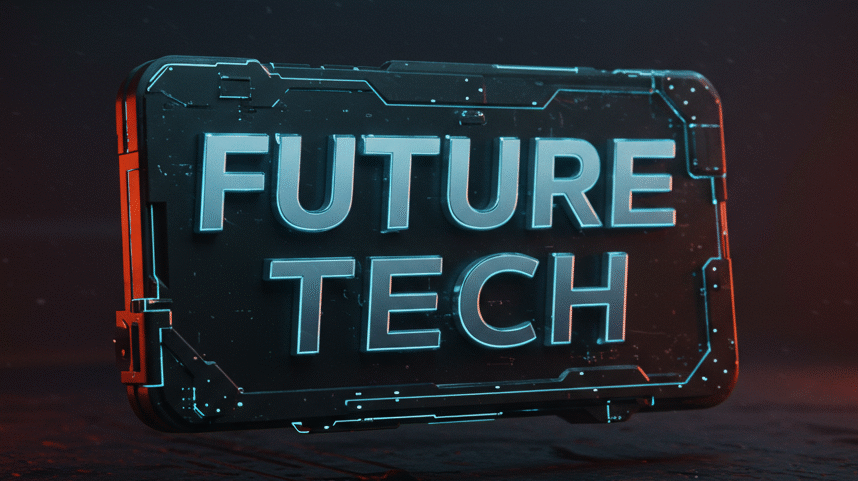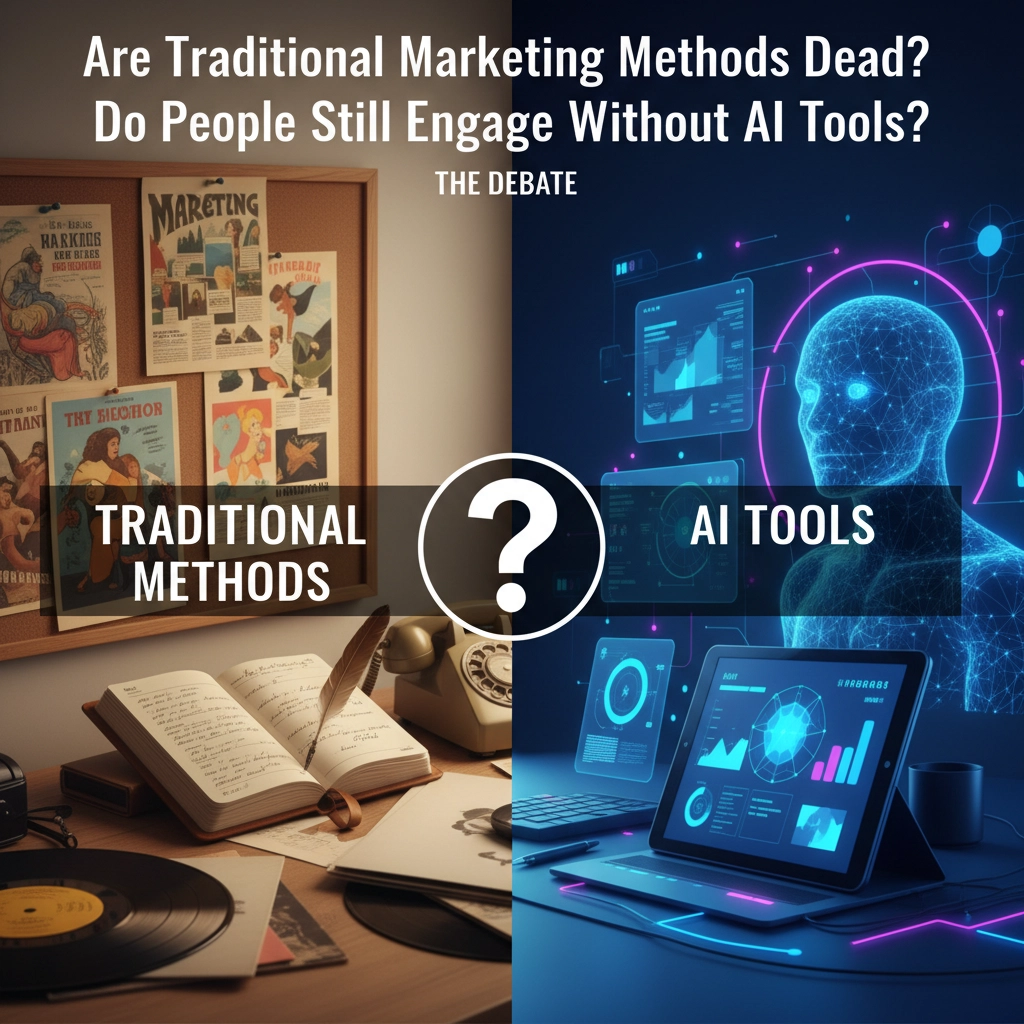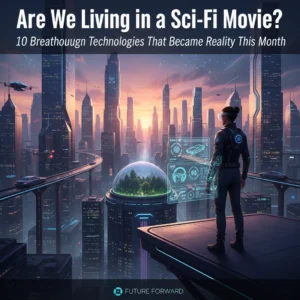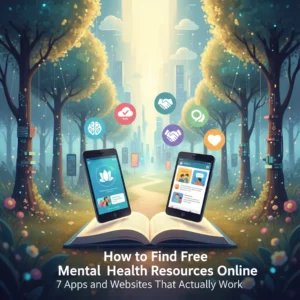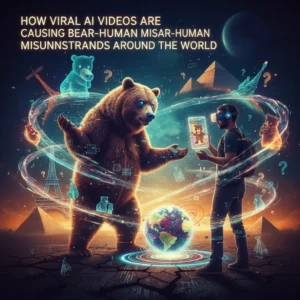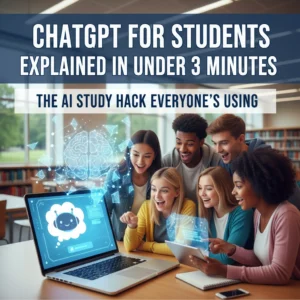Here's a question that's been keeping marketers up at night: With AI chatbots answering our questions and algorithms curating our feeds, are billboards and TV commercials just expensive dinosaurs waiting to go extinct?
The short answer? Not even close.
Traditional marketing is pulling in over $296 billion globally from TV advertising alone. That's not pocket change – that's "we're still very much alive and kicking" money. But here's what's really happening: traditional marketing isn't dying, it's evolving. And the relationship between old-school tactics and AI tools isn't a death match – it's more like an unlikely friendship.
The Trust Factor Still Matters
Let's talk about something most people don't expect: trust. When was the last time you got a sketchy email promising you millions from a Nigerian prince? Probably this week. Now think about the last time a magazine ad tried to scam you. See the difference?

Here's what the numbers tell us: 72% of consumers trust print ads more than online ones. That's not because people are stuck in the past – it's because there's something inherently trustworthy about physical marketing materials. When a company spends money on a full-page magazine ad or a billboard on Highway 101, it signals they're legitimate and here to stay.
I remember helping my aunt shop for a new car last year. She'd done all her online research, read reviews, watched YouTube videos – the whole digital deep-dive. But when it came time to make the final decision, she wanted to see the TV commercial. "If they're advertising during prime time," she said, "they must be doing something right." That's the trust factor in action.
Traditional marketing creates what researchers call "weight and credibility" that digital ads struggle to match. It's harder to fake a Times Square billboard than it is to create a misleading Facebook ad.
The Engagement Numbers Don't Tell the Whole Story
Sure, traditional marketing generates about 50% fewer interactions than digital marketing. But here's the thing – not all engagement is created equal. Getting 1,000 likes on a social media post feels great, but does it translate to sales? Sometimes. Getting someone to remember your brand name when they're standing in Target six months later? That's where traditional marketing shines.

Think about it this way: digital marketing is like having a conversation at a party. It's immediate, interactive, and you get instant feedback. Traditional marketing is like leaving a lasting impression – it sticks with people in ways they don't even realize.
The real magic happens when you combine both approaches. Here's what smart marketers are doing:
• Using AI tools to analyze customer data and identify the best traditional channels to reach them
• Creating QR codes that bridge the gap between physical ads and digital experiences
• Running coordinated campaigns where a TV commercial drives traffic to a personalized landing page
• Using AI chatbots to answer questions generated by traditional advertising
• Leveraging social media to amplify traditional campaigns and create buzz
Why AI and Traditional Marketing Are Perfect Partners
Here's where things get interesting. While 85% of marketers use AI tools daily, the smartest ones aren't replacing traditional methods – they're supercharging them.
AI excels at precision targeting and real-time optimization. You can launch a digital campaign in the morning and adjust it by lunch based on performance data. Traditional marketing, on the other hand, excels at building broad awareness and creating those memorable "I saw this everywhere" moments that make brands feel important and established.
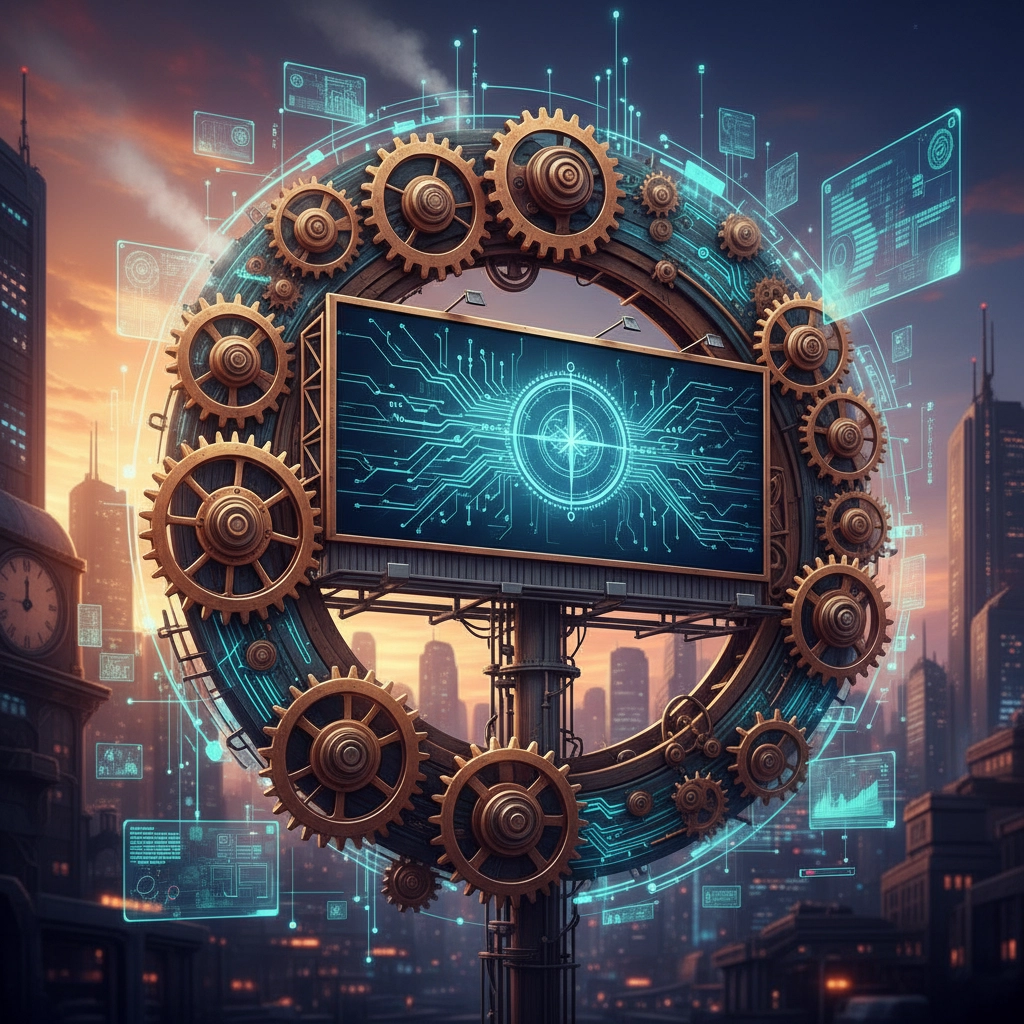
Consider luxury brands like Chanel or high-end car manufacturers. They still invest heavily in print magazines and television because these channels communicate prestige and permanence. But they're also using AI to track which traditional touchpoints drive the most online engagement and sales.
The beauty is in the combination. A customer might see a billboard, then get retargeted with a personalized social media ad, then receive a direct mail piece with a custom offer based on their browsing behavior. That's not traditional versus AI – that's traditional plus AI working together.
The Demographics Still Drive the Strategy
Let's get real about who's engaging with what. Your 65-year-old neighbor probably isn't spending hours on TikTok, but they're definitely watching the evening news and reading the newspaper. Meanwhile, your teenage cousin might not even know what a newspaper is, but they'll watch a 15-second video ad if it's entertaining enough.
The key insight? Different audiences live in different media ecosystems, and smart marketers meet them where they are. Traditional marketing remains incredibly effective for reaching older demographics, rural communities, and anyone who values stability and familiarity over the latest digital trends.
But here's what's surprising: even younger consumers respond to traditional marketing when it's done right. A well-designed billboard or a creative radio spot can cut through digital noise in ways that feel refreshing and authentic.
Local businesses, in particular, benefit enormously from traditional approaches. Community sponsorships, local newspaper ads, and good old-fashioned networking events build the kind of trust and loyalty that no algorithm can replicate. When the local hardware store sponsors your kid's Little League team, that's relationship-building money can't buy.
The Bottom Line: It's Not About Choosing Sides
The future of marketing isn't traditional OR AI-powered – it's traditional AND AI-powered. The most successful brands are using AI to make their traditional marketing smarter, not to replace it entirely.
Think about it: AI can tell you exactly which radio stations your target customers listen to, what time they're most likely to be in their cars, and even what kind of music puts them in a buying mood. Then you can create a radio ad that feels perfectly timed and relevant. That's the power of combining old and new.
The companies struggling are the ones trying to pick a side. The ones thriving are treating marketing like a symphony – every instrument has its role, and the magic happens when they all play together.
So, are traditional marketing methods dead? Not by a long shot. Are people still engaging without AI tools? Absolutely. But the real question is: why would you want to limit yourself to just one approach when you could have the best of both worlds?
What's your take – have you noticed yourself responding differently to traditional ads versus digital ones lately?
